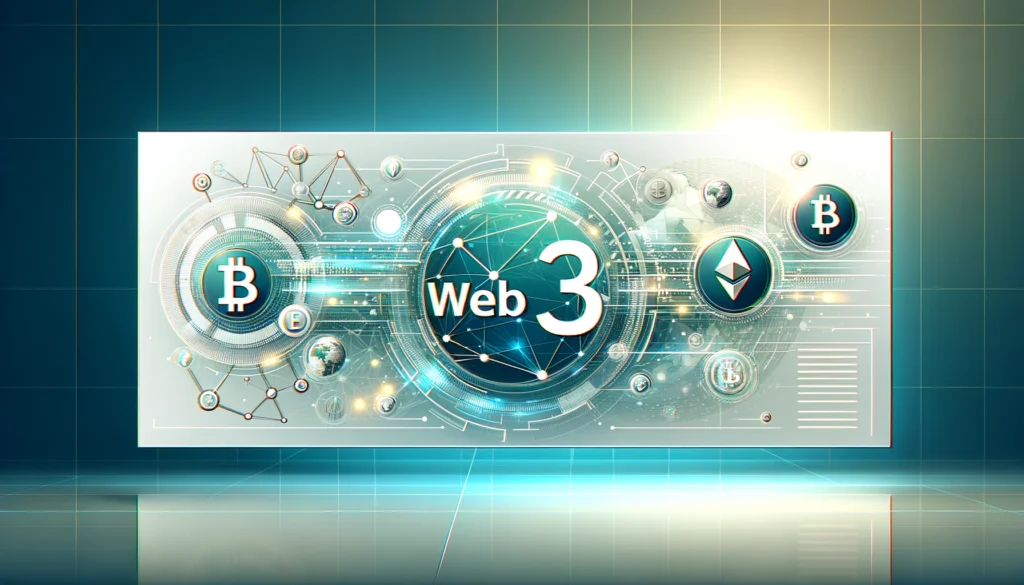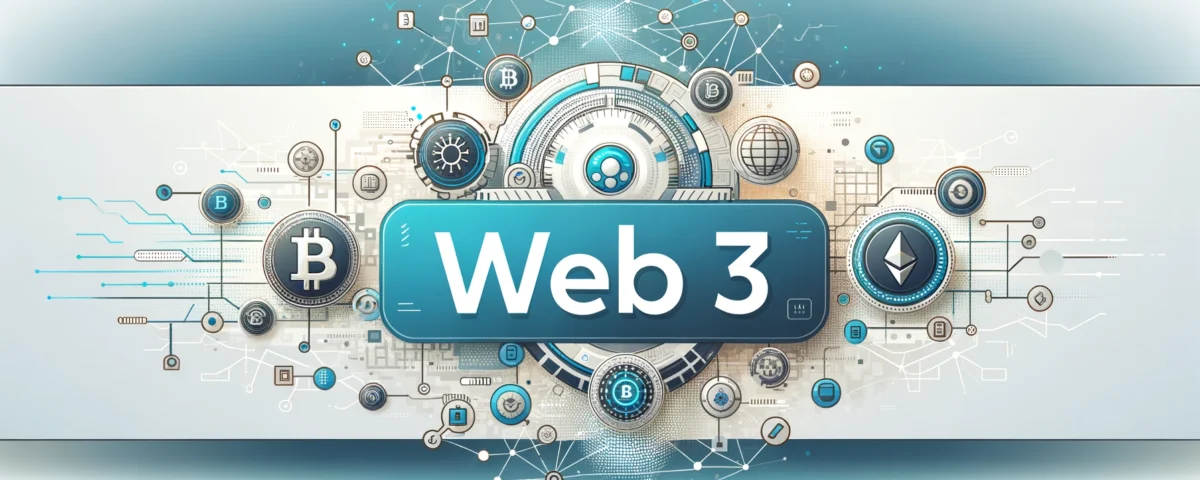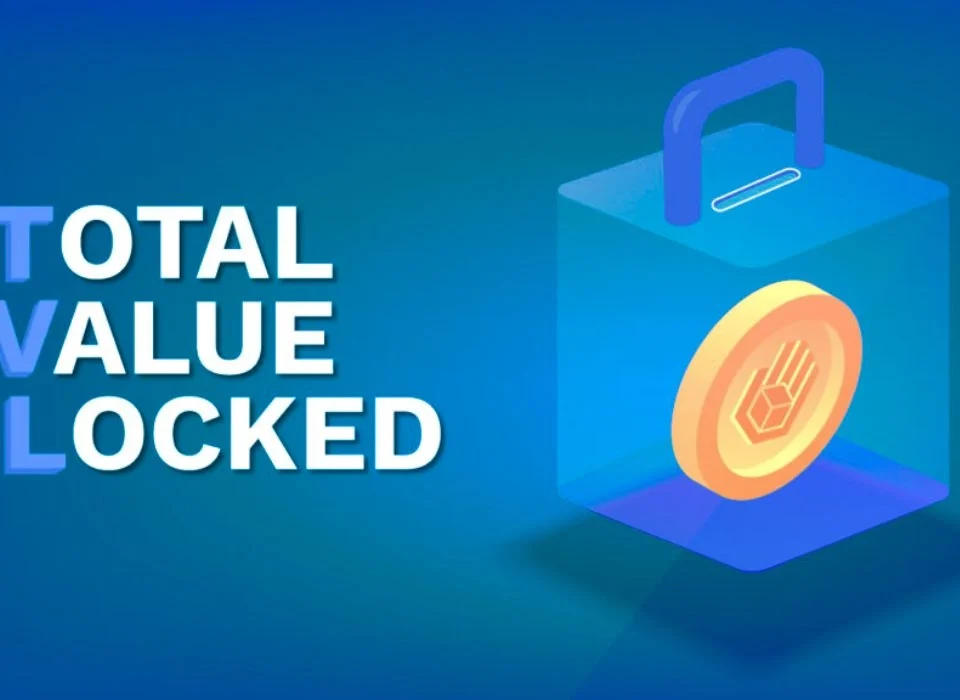
Unlock the Power of the Ethereum Blockchain with MetaMask Wallet: Your Gateway to DeFi, NFTs, and More
29/05/2024
Shiba Inu (SHIB) Gains Bullish Momentum Amid Market Consolidation
29/05/2024What Are Web 3 Cryptocurrencies?
The internet has gone through several transformative phases since its inception. From the early days of static web pages (Web 1.0) to the dynamic, interactive web we use today (Web 2.0), each iteration has brought significant changes. Now, we stand on the brink of another major evolution: Web 3.0, often referred to simply as Web3. At the heart of this transformation are Web3 cryptocurrencies, which aim to decentralize the web and empower users in unprecedented ways. This article explores what Web3 cryptocurrencies are, their role in the evolving internet, and their potential impact on the future.

Understanding Web 3.0
Web 3.0 represents the next phase of the internet, where decentralization, user ownership, and blockchain technology play pivotal roles. Unlike Web 2.0, which is dominated by centralized platforms and intermediaries, Web 3.0 envisions a web where users have more control over their data, identities, and online interactions. Key components of Web 3.0 include:
- Decentralization: Data and applications are distributed across a network of nodes, rather than being controlled by a central authority. This reduces the risk of censorship and data breaches.
- Blockchain Technology: Blockchain provides the underlying infrastructure for Web 3.0, enabling secure, transparent, and tamper-proof transactions.
- Smart Contracts: These self-executing contracts with the terms of the agreement directly written into code allow for trustless transactions and automation.
- User Sovereignty: Users own their data and digital identities, with greater privacy and security compared to Web 2.0.
What Are Web3 Cryptocurrencies?
Web3 cryptocurrencies are digital assets that power the decentralized applications (dApps) and protocols forming the backbone of Web 3.0. These cryptocurrencies facilitate transactions, incentivize network participation, and enable governance within decentralized ecosystems. Here are some key characteristics of Web3 cryptocurrencies:
- Utility Tokens: Many Web3 cryptocurrencies serve as utility tokens, providing access to specific services or functionalities within a dApp or protocol. For example, they might be used to pay for transaction fees, access premium features, or stake in governance decisions.
- Governance Tokens: Governance tokens give holders the ability to participate in the decision-making processes of a protocol or platform. This includes voting on proposals, changes to the protocol, or the allocation of funds.
- Incentive Mechanisms: Web3 cryptocurrencies often include mechanisms to reward users for participating in the network, such as staking, providing liquidity, or contributing to the development of the ecosystem.
- Interoperability: Many Web3 cryptocurrencies are designed to be interoperable with other blockchains and protocols, facilitating seamless interaction and integration across different platforms.
Key Web3 Cryptocurrencies
Several cryptocurrencies are at the forefront of the Web 3.0 movement. Here are some of the most prominent Web3 cryptocurrencies and their roles within the ecosystem:
- Ethereum (ETH) Ethereum is the most well-known and widely used blockchain for developing decentralized applications and smart contracts. Its native cryptocurrency, Ether (ETH), is used to pay for transaction fees (gas) and computational services on the network. Ethereum’s robust ecosystem of dApps, DeFi platforms, and NFT marketplaces makes it a cornerstone of Web 3.0.
- Polkadot (DOT) Polkadot is a multi-chain blockchain platform that enables different blockchains to interoperate and share information securely. Its native token, DOT, is used for governance, staking, and bonding within the Polkadot network. Polkadot’s ability to connect disparate blockchains is crucial for creating a truly decentralized Web 3.0.
- Chainlink (LINK) Chainlink is a decentralized oracle network that provides real-world data to smart contracts on the blockchain. LINK, the network’s native token, is used to pay for data services and incentivize node operators. Chainlink’s reliable data feeds are essential for the functionality of many Web3 applications, from DeFi protocols to decentralized insurance.
- Filecoin (FIL) Filecoin is a decentralized storage network that allows users to rent out their unused storage space and earn FIL tokens in return. It provides a decentralized alternative to traditional cloud storage services, enhancing data privacy and security. Filecoin’s storage solutions are a key component of the decentralized infrastructure needed for Web 3.0.
- Tezos (XTZ) Tezos is a self-amending blockchain platform that supports smart contracts and dApps. Its native token, XTZ, is used for staking, governance, and paying transaction fees. Tezos’ focus on on-chain governance and formal verification of smart contracts makes it a secure and adaptable platform for Web3 development.
- Uniswap (UNI) Uniswap is a decentralized exchange (DEX) built on the Ethereum blockchain, allowing users to trade cryptocurrencies without intermediaries. UNI, Uniswap’s governance token, allows holders to vote on protocol upgrades and changes. Uniswap’s automated market maker (AMM) model and decentralized nature make it a popular choice for Web3 traders.
The Role of Web3 Cryptocurrencies
Web3 cryptocurrencies play several critical roles in the evolving landscape of the internet. Here are some of the key functions they serve:
- Facilitating Transactions: Web3 cryptocurrencies enable fast, secure, and low-cost transactions within decentralized networks. They are used to pay for services, transfer value, and facilitate peer-to-peer interactions without intermediaries.
- Incentivizing Participation: Many Web3 platforms use cryptocurrencies to incentivize users to participate in the network. This can include rewards for staking, providing liquidity, or contributing to the development of the platform.
- Enabling Governance: Governance tokens give users a say in the decision-making processes of a platform. This decentralized governance model ensures that the community has control over the development and direction of the project.
- Enhancing Security: By using blockchain technology, Web3 cryptocurrencies enhance the security and transparency of transactions. They reduce the risk of fraud and data breaches, providing a more secure environment for users.
- Promoting Interoperability: Web3 cryptocurrencies facilitate interoperability between different blockchains and protocols. This interconnectedness is essential for creating a seamless and decentralized internet.
Benefits of Web3 Cryptocurrencies
Web3 cryptocurrencies offer several advantages over traditional financial systems and Web 2.0 platforms:
- Decentralization: By removing intermediaries, Web3 cryptocurrencies enable peer-to-peer transactions and interactions. This decentralization reduces the risk of censorship and increases transparency.
- User Control: Web3 cryptocurrencies empower users to have greater control over their data, digital identities, and financial transactions. Users can interact with decentralized applications without relying on centralized platforms.
- Security: Blockchain technology provides a high level of security for Web3 cryptocurrencies. Transactions are recorded on an immutable ledger, reducing the risk of fraud and hacking.
- Global Accessibility: Web3 cryptocurrencies are accessible to anyone with an internet connection. This global reach can help to democratize access to financial services and online interactions.
- Innovation: The Web3 ecosystem is a hotbed of innovation, with developers creating new applications and services that leverage blockchain technology. This continuous innovation drives the growth and evolution of the internet.

Challenges and Considerations
Despite their potential, Web3 cryptocurrencies also face several challenges and considerations:
- Scalability: Many blockchain networks, including Ethereum, face scalability issues that can lead to high transaction fees and slow processing times. Layer 2 solutions and new consensus mechanisms are being developed to address these challenges.
- Regulatory Uncertainty: The regulatory environment for cryptocurrencies is still evolving. Governments around the world are grappling with how to regulate digital assets, and future regulations could impact the development and adoption of Web3 cryptocurrencies.
- User Experience: For many users, interacting with blockchain-based applications can be complex and confusing. Improving the user experience is crucial for the widespread adoption of Web3 technologies.
- Security Risks: While blockchain technology is inherently secure, Web3 platforms are not immune to hacks and exploits. Ensuring the security of smart contracts and decentralized applications is a constant challenge.
- Energy Consumption: Some blockchain networks, particularly those using Proof of Work (PoW) consensus mechanisms, consume significant amounts of energy. Moving to more energy-efficient consensus mechanisms, like Proof of Stake (PoS), is essential for the sustainability of Web3.
The Future of Web3 Cryptocurrencies
The future of Web3 cryptocurrencies is filled with potential and possibilities. Here are some key trends and developments to watch:
- Layer 2 Solutions: To address scalability issues, many projects are developing Layer 2 solutions that operate on top of existing blockchains. These solutions, such as Optimistic Rollups and zk-Rollups, aim to increase transaction throughput and reduce fees.
- Interoperability Protocols: Projects like Polkadot and Cosmos are working to improve interoperability between different blockchains. This interconnectedness will be crucial for the seamless operation of Web 3.0.
- DeFi and NFTs: The growth of DeFi and NFTs is driving significant innovation in the Web3 space. As these ecosystems expand, they will continue to push the boundaries of what is possible with blockchain technology.
- Decentralized Governance: The rise of decentralized autonomous organizations (DAOs) is transforming how projects are managed and governed. DAOs allow communities to make decisions collectively, reducing the influence of centralized entities.
- Regulatory Clarity: As governments around the world develop clearer regulations for cryptocurrencies, the Web3 space will benefit from increased legitimacy and stability. Clear regulations can help to foster innovation while protecting users.
How to Get
Started with Web3 Cryptocurrencies
If you’re interested in exploring Web3 cryptocurrencies, here are some steps to get started:
- Educate Yourself: Begin by learning about blockchain technology, smart contracts, and the principles of Web 3.0. There are many online resources, courses, and communities that can help you get started.
- Choose a Wallet: To interact with Web3 applications, you’ll need a cryptocurrency wallet. Popular options include MetaMask, Trust Wallet, and Coinbase Wallet. These wallets allow you to store, send, and receive cryptocurrencies securely.
- Acquire Cryptocurrencies: You can purchase Web3 cryptocurrencies on various exchanges, such as Binance, Coinbase, and Kraken. Make sure to use a reputable exchange and follow best practices for securing your funds.
- Explore dApps: Once you have a wallet and some cryptocurrencies, you can start exploring decentralized applications. Visit dApp directories like DappRadar to discover a wide range of Web3 applications, from DeFi platforms to NFT marketplaces.
- Participate in Governance: If you hold governance tokens, consider participating in the governance processes of the projects you’re interested in. This can include voting on proposals and contributing to the direction of the project.
- Stay Informed: The Web3 space is constantly evolving, with new developments and innovations emerging regularly. Stay informed by following industry news, joining online communities, and participating in discussions.
Conclusion
Web3 cryptocurrencies represent a fundamental shift in how we interact with the internet and digital assets. By leveraging blockchain technology, these cryptocurrencies enable decentralized, secure, and user-centric applications and services. As the Web 3.0 ecosystem continues to grow and evolve, Web3 cryptocurrencies will play a critical role in shaping the future of the internet.
By understanding what Web3 cryptocurrencies are, exploring their key characteristics and roles, and considering their benefits and challenges, we can better appreciate the transformative potential of this emerging technology. Whether you’re a developer, investor, or enthusiast, the world of Web3 offers exciting opportunities to participate in the next evolution of the internet.
Links:



